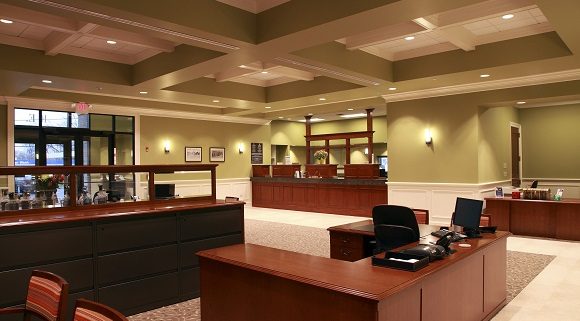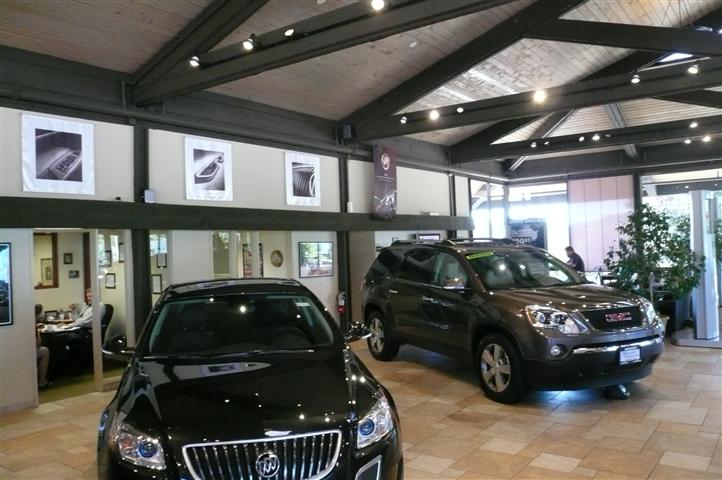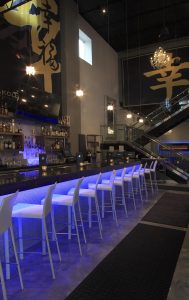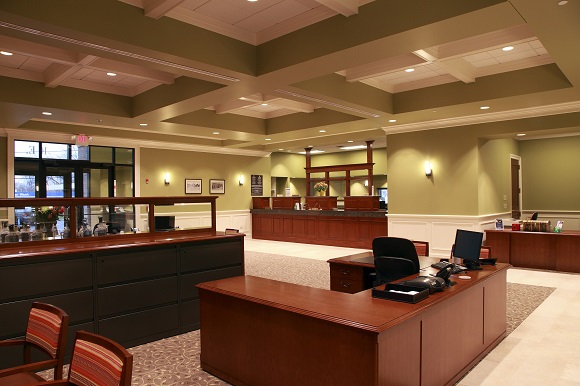Shining light on LED lamps
Consider using LED lamps in your next remodeling or new construction project. By doing so, you will save money, time, energy and materials.
Use LED Lamps for New Construction and Remodeling
In new buildings, many advantages can be gained by choosing LED (Light Emitting Diode) lamps for your lighting fixtures. The electrical service can be smaller because of the reduced demands put on the system by LED lamped fixtures. Since the LEDs draw less power (6-8 watts) for the same light output, you can put more lighting fixtures on each circuit. This reduction in electrical circuits saves materials, wiring and labor.
Many advantages can also be gained by retrofitting existing buildings with LED lamps. In 2014, we worked with Marquardt of Barrington to update their showroom and facility with the latest GM branding, including adding new and retrofitting existing fixtures with LED lamps. Recently, we helped Knauz Auto Park in Lake Bluff, IL to upgrade their BMW showroom, parts, and service department. Our client gained a huge energy reduction and sizable savings by upgrading to energy-efficient lighting fixtures and by retrofitting existing fixtures with LED lamps. The savings doesn’t stop there…we have applied for ComEd’s Smart Ideas® rebate for Knauz, which offers substantial cash incentives for energy-efficient lighting, including fixture replacement and retrofits. Going forward, the dealership will save in electrical costs for reduced lighting and air conditioning usage.
Why Switch to LED Lamps?
Here are 6 compelling reasons to choose from to LED lamps over the other options:
- Save Money
When LEDs initially came on the market, they were expensive, but prices have come down to as low as $3 per lamp.
And LED lamps have a long lamp life – around 50,000 hours! That compares to 1,200 hours for an incandescent lamp or 8,000 for CFLs. You will not need to purchase and replace LED lamps for a long time. Relamping intervals for your fixtures will be reduced from months to years! Over the long-run, fewer materials are used in the manufacture of LED lamps.
- Save Energy
LEDs use fewer watts and produce less heat than incandescent and fluorescent lamps. In fact, LEDs are 40% more efficient than fluorescent and 750% more than incandescent! LEDs also run cool so they greatly reduce building heat gain from lighting. In commercial buildings, cooling tends to be a big factor versus heating. With cool LEDs, building mechanical systems do not need to run as frequently. Less air conditioning use saves energy.
- Save Labor
LED lamps don’t need to be changed as often. You will save time by replacing the lamps less frequently.
- Reduce Risk
Since LED lamps don’t need to be changed as often, you or your staff will spend less time on a ladder changing lamps. Less ladder time means a reduced risk of falls. LED lamps also do not contain lead or mercury and they are very durable.
- Increase Flexibility
Unlike most fluorescent lamps, dimming is easy to achieve with LED lamps.
- Avoid Cold Weather Problems
LEDs function well in the cold weather. By contrast, compact fluorescent lamps and fluorescent ballasts do not perform well and the lamps don’t get bright in extreme cold conditions.
What’s up with the Rebates?
Power companies are focused on a variety of conservation measures that use less energy and fewer materials to generate the electrical power businesses need. ComEd and other power companies throughout the country are offering rebates on the purchase of LED lamps. It is cheaper for power companies to pay rebates than to build additional infrastructure. When businesses and consumers use less energy, power companies do not need to build new power plants. Time-of-use rate plans are another way your company can reduce energy costs.
Consider using LED lamps in your next remodeling or new construction project. By doing so, you will save money, time, energy and materials – what’s not to like about that?
LEDs function well in the cold weather. By contrast, compact fluorescent lamps and fluorescent ballasts do not perform well and the lamps don’t get bright in extreme cold conditions.
Are There Any Energy Tax Incentives?
The 179D EPAct & 45L Home Credit tax incentives have been extended to December 31, 2016. The incentives will reduce tax liability for property owners and architects while incentivizing investments in energy efficient technologies. Contact us at 847-247-0303 to see if your commercial project qualifies. See more at http://engineeredtaxservices.com/45l-and-179d-path-act/






